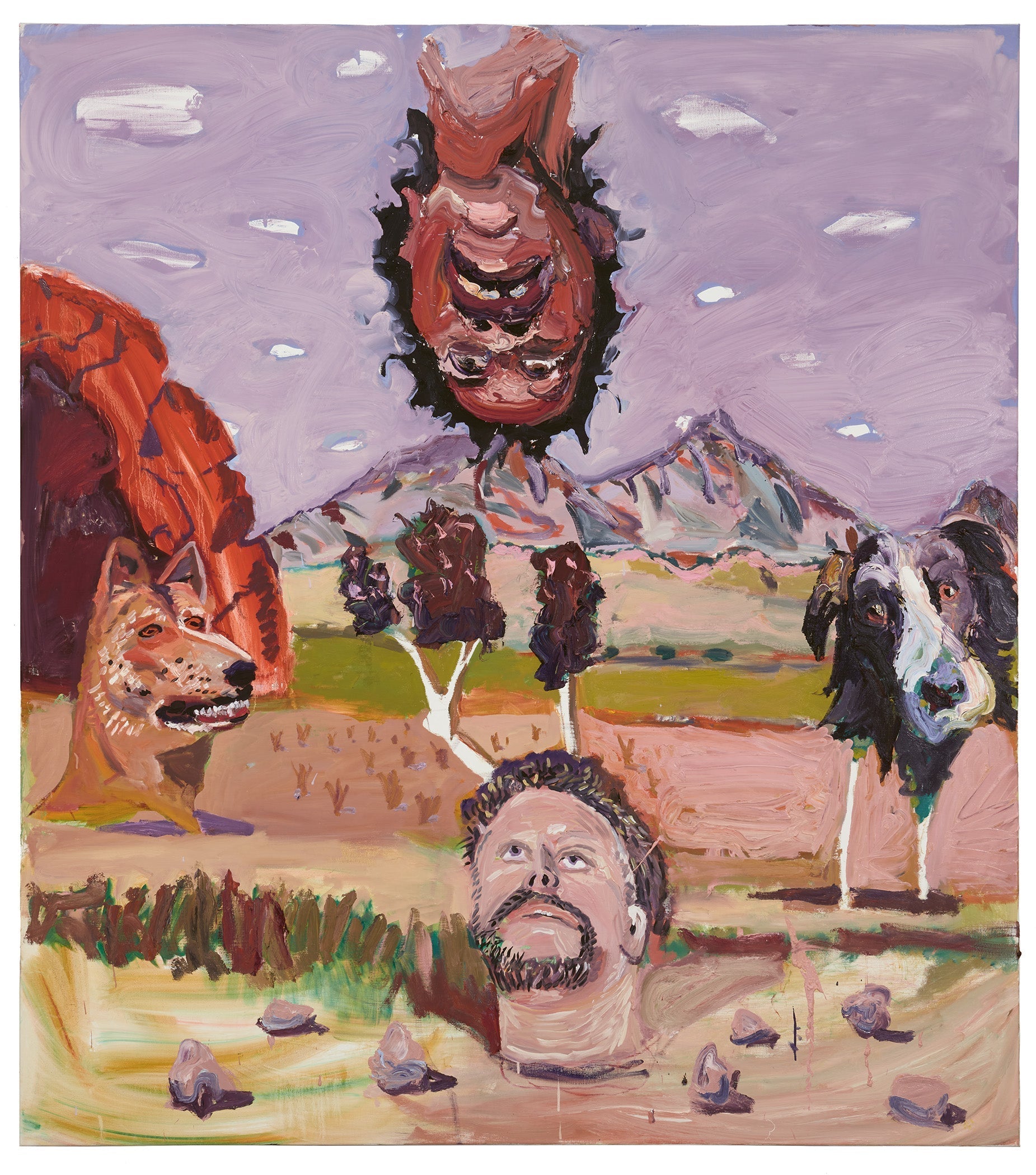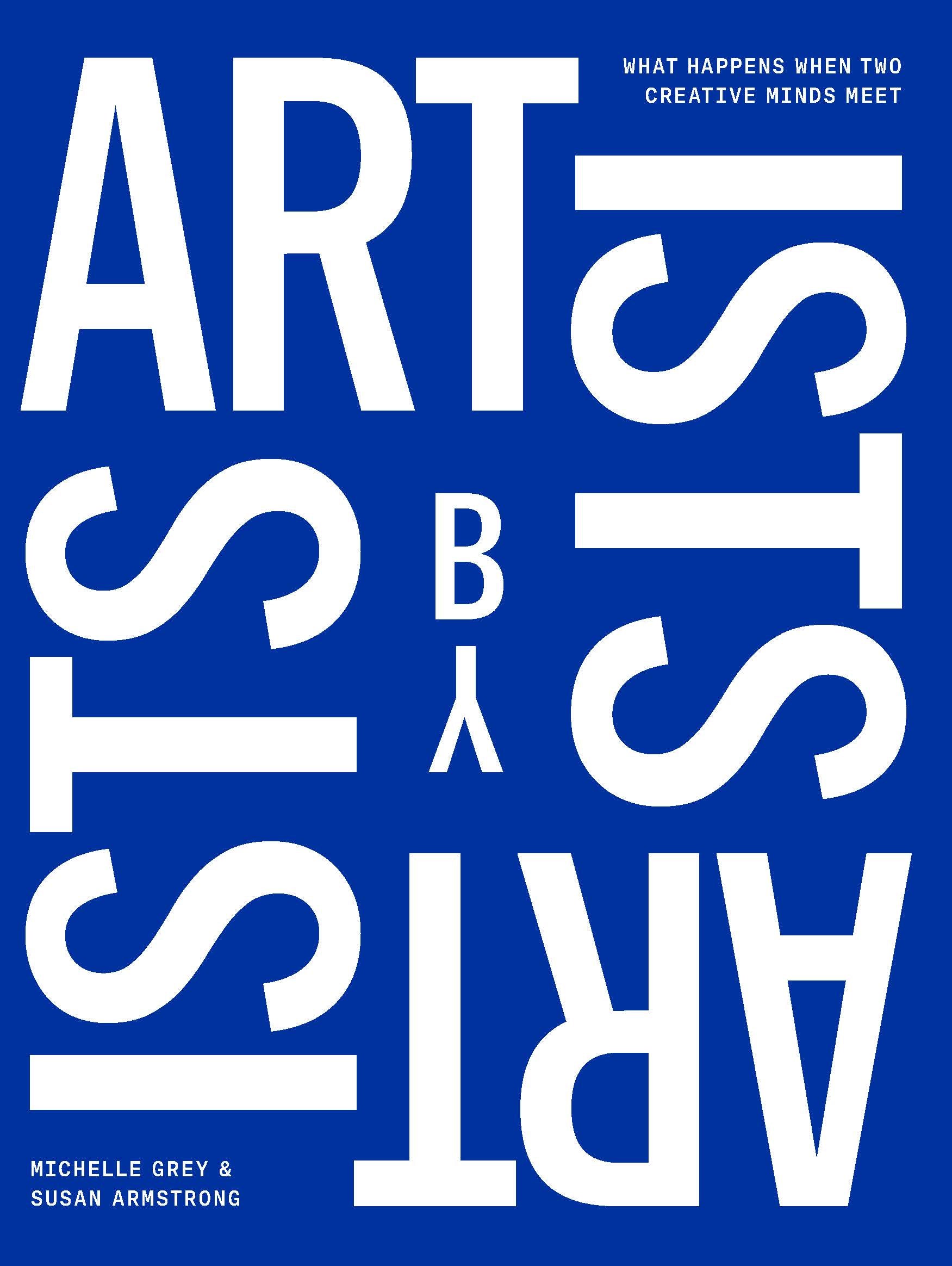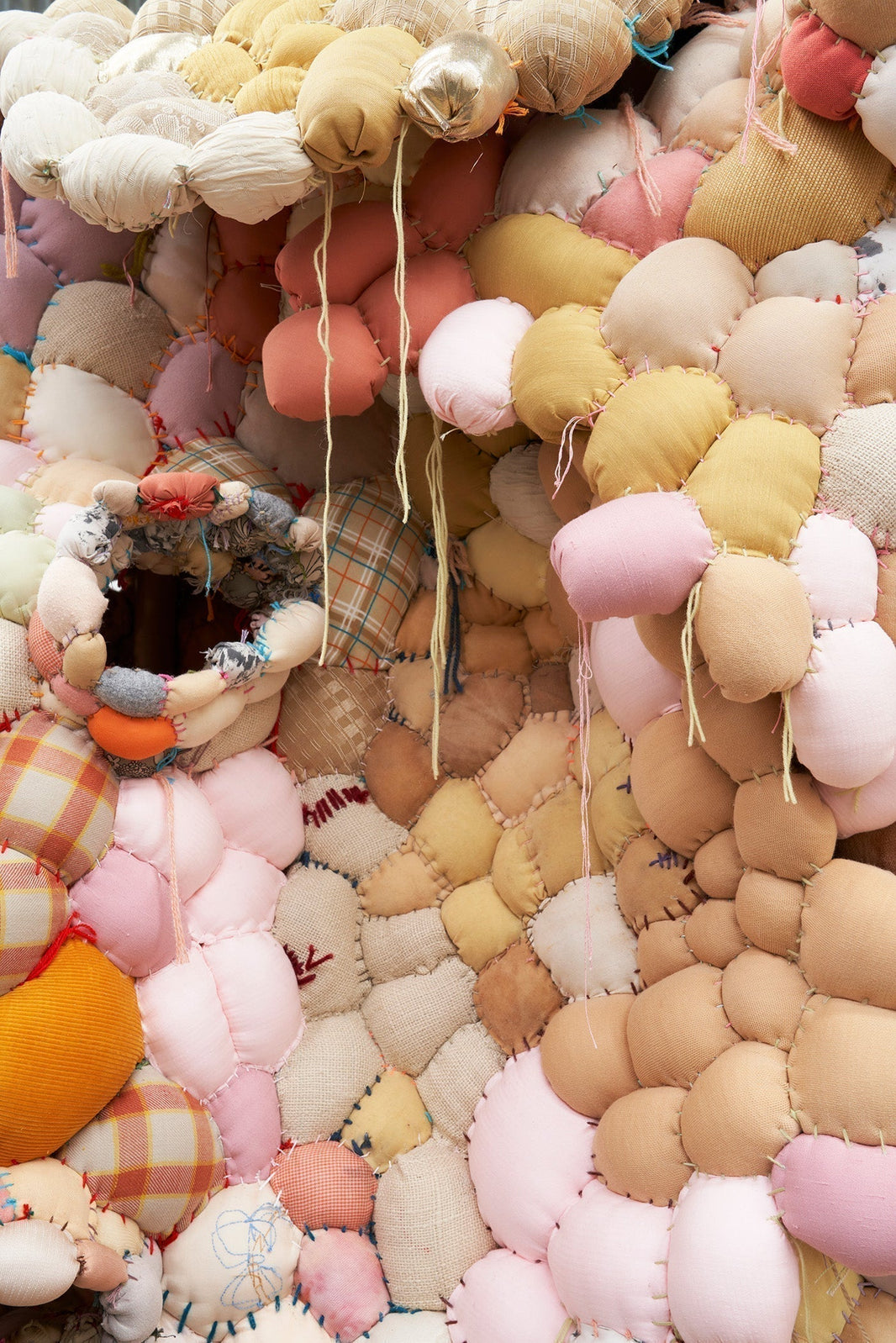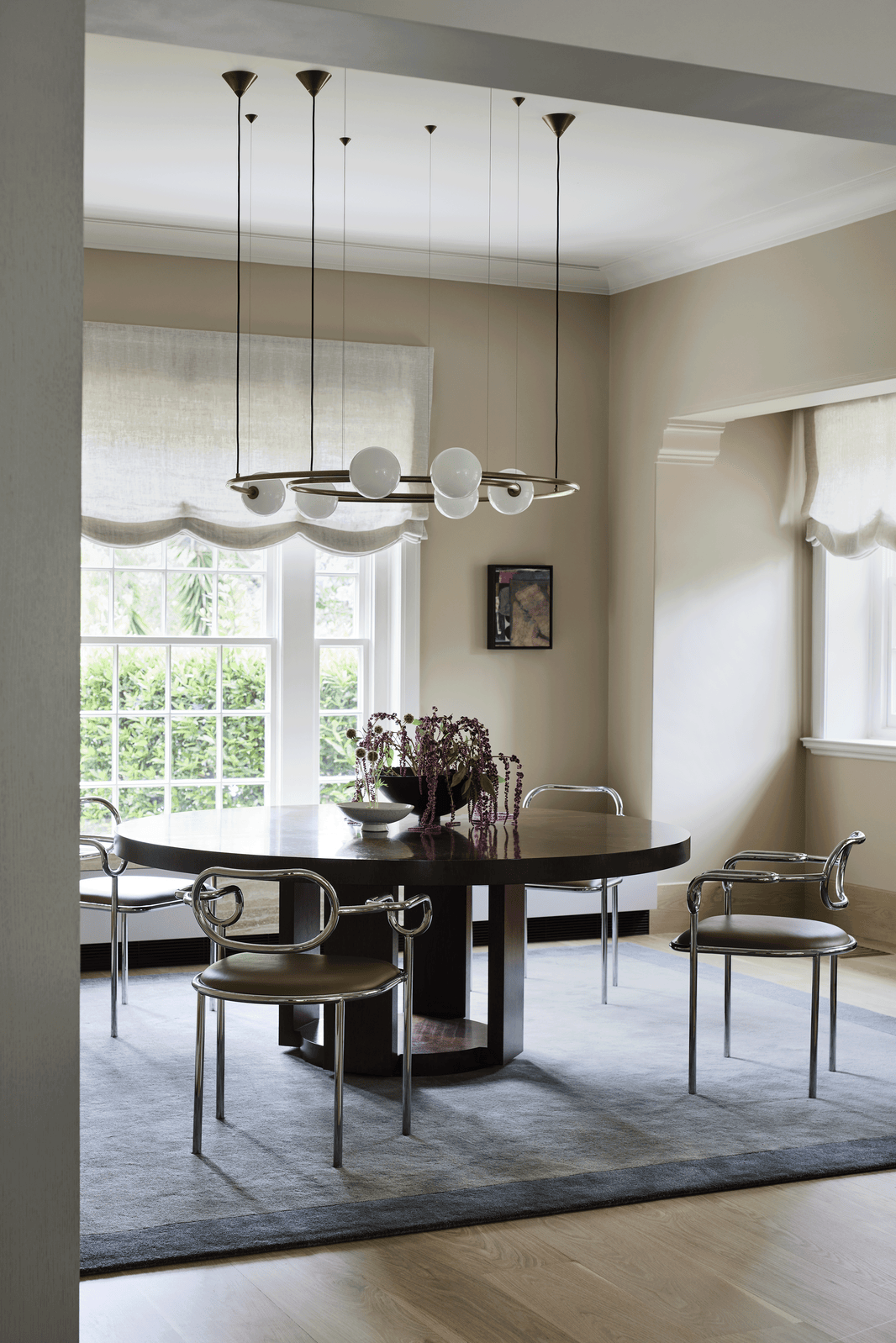What happens when two creatives meet?
Read an excerpt from Artists by Artists by Michelle Grey and Susan Armstrong. Available now.

Ben Quilty and Vincent Namatjira, Rwetyepme (Mount Sonder), 2023, oil on linen, 202 x 180 cm. Courtesy of the artist
Artists by Artists is not simply a collection of portraits and interviews but an art project that celebrates cultural exchange through the talents of some of Australia’s most respected and revered artists.
The relationship between an artist and their subject is an enduring one, forged in both fleeting moments and deliberate sittings. It may arise by chance – a spontaneous sketch captured in passing – or unfold through a series of carefully arranged sessions. Regardless of circumstance, the artist and sitter become intrinsically linked through the portrait itself. The works in this book offer a deeper, more nuanced insight into the artists’ identities and their modes of communication than any critical essay or academic biography could provide, revealing an intimacy that transcends language.

Tamara Dean, Portrait of Michelle Gearin, archival inkjet print on cotton rag, 91 x 160 cm. Courtesy of Tamara Dean, represented by Michael Reid Sydney + Berlin
The binary code of portraiture lies in its fundamental duality: the subject and the artist, the observer and the observed, presence and absence. A portrait simultaneously captures and distorts, immortalises and abstracts. It operates within a system of opposites – realism versus interpretation, permanence versus impermanence – where each mark made by the artist encodes a fragment of identity. The dynamic nature of each artist pairing reflects different ways of viewing portraiture, with some seeking to create a realistic version of their subject and others choosing to use abstraction to capture elements of their past history, relationships or internal dialogue. The portraits created for this book are often as much about the creator as they are about the subject. As Oscar Wilde once famously wrote, ‘Every portrait that is painted with feeling is a portrait of the artist, not of the sitter.’
From the Palaeolithic cave paintings of Altamira to the contemporary canvases of today, portraiture has endured as an art form, continuously evolving while remaining a profound reflection of the human experience. Though the media and techniques may shift with each era, the essence of portraiture persists, capturing the depth, character and complexity of its subjects.
Portraiture has evolved from an exclusive marker of wealth and status into a kinetic and democratic reflection of the times in which we live. Historically, commissioned portraits reinforced power and privilege, immortalising royalty, aristocrats and the elite in grandiose poses that emphasised their authority. Today, however, portraiture extends far beyond traditional oil paintings and gilded frames; it serves as a social commentary, capturing the diversity, struggles and stories of everyday people. Contemporary artists use portraiture to challenge norms, highlight marginalised voices and engage with pressing cultural and political issues. Whether through photography, digital media or unconventional materials, today’s portraits tell collective narratives, offering a multifaceted depiction of our shared human experience. Contemporary art, at its best, should be in conversation with its own time.

Julie Rrap and Cherine Fahd, OutTakes, 2024. Courtesy of the artist
Portraiture holds a unique role in Australian art, particularly in its engagement with Indigenous voices and the broader process of reclaiming representation. Historically, Australian portraiture has been deeply tied to colonial narratives, often depicting First Nations people as passive subjects rather than as storytellers in their
own right.
While some artists in this book are traditional portrait painters, they still strive to modernise the medium, offering a reprieve from the rigours and responsibilities of representational art. For some that is by incorporating contemporary techniques, materials and concepts that expand the boundaries of representation, for others by blending classical methods with digital tools or mixed media to create dynamic, layered portraits. Others integrate unconventional materials, such as textiles, papier-mâché or found objects, to add new textures and narratives to their work. Some have chosen to let go of the temporal space of traditional portraiture in pursuit of something more spiritually transcendent. Many artists in the book have challenged conventional portraiture by pivoting from a mere reflection of physical appearance to a deeper exploration of identity, social issues and personal history, using themes such as gender fluidity, cultural hybridity and socio-economic disparity to convey that portraiture remains a relevant and evolving
form of artistic expression.
What makes this project unique are the pairings of each artist and the relationship that unfolds during the process of creating another’s portrait. There is no better way to understand the inner thinking of an artist, or any human being for that matter, than by understanding how they relate to other people. In almost all of the pairings in the book the artist chose their partner, which, in itself, gives an insight into who they are and their desire to distil the essence or celebrate the power of a particular peer.

Jazz Money, Portrait of a Dancer, 2024, custom printed vinyl flooring, 4.5 m diameter. Studio photography by Joel Spring. Courtesy of the artist
In some instances the relationship took on a mentor/mentee dynamic, where one artist was further along in their career and the project created an intergenerational exchange where both artists benefited from the relationship. Other pairings featured friendships, some newly formed, others deeply rooted in shared history. For some artists,
it was an opportunity to connect with someone they had long admired. This project provides insights into the way they each see the world, each other and the elemental power and poetry of how they’ve chosen to live their lives.
We hope this book offers an opportunity to experience modern modes of portraiture, created through the lens of human relationships, allowing you to access a place where things are more than just a sum of their parts.
See more in Artists by Artists by Michelle Grey and Susan Armstrong, available now.






